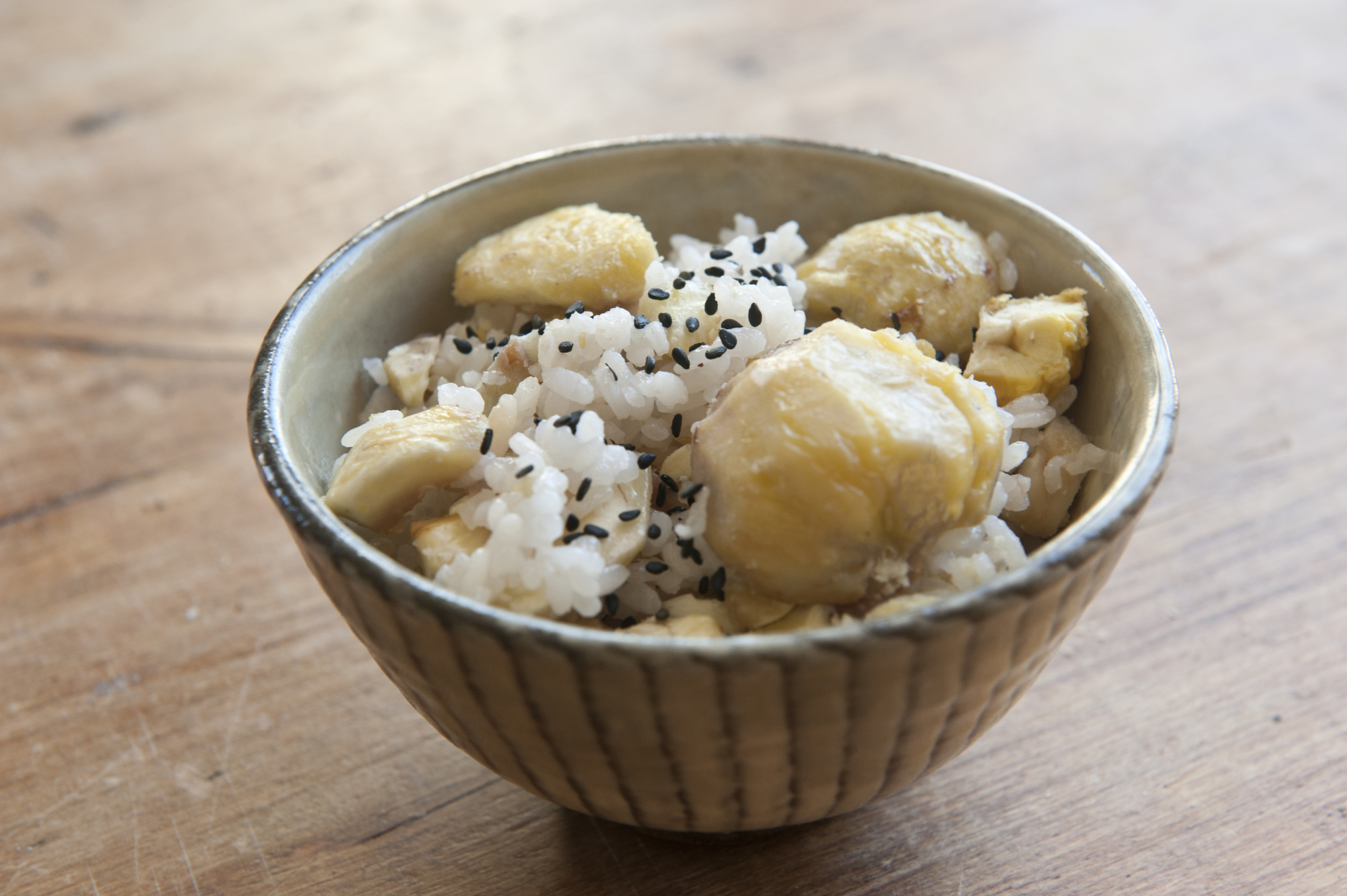Fresh chestnuts are one of the few things in Japan that are truly seasonal and not available year-round like so many other food products these days. Chestnuts (kuri in Japanese) have been consumed here since prehistoric times. Charred chestnuts that are more than 9,000 years old have been found in and around the archaeological sites of Jomon Period (10,000-200 B.C.) settlements.
At the 5,500-year-old Sannai-Maruyama site in Aomori Prefecture, evidence of large-scale cultivation of chestnuts has also been discovered — as well as a huge chestnut tree in the center of the settlement that was probably used for religious rituals — indicating their importance as a food source in the days before rice cultivation became widespread. The chestnut wood was valued as building material as well as firewood. Chestnuts are still used in Shinto rituals in some parts of the country, and they're an important osechi (New Year's holiday cuisine) dish: a concoction of mashed sweet potatoes with kuri no kanro-ni, chestnuts cooked in sugar syrup. Chestnuts cooked with a crushed gardenia seed are supposed to bring good financial fortune and help make you a winner in life.
Chestnuts are no longer a main staple in the Japanese diet, but they're still popular in both sweet and savory form. Two of the most popular ways to eat chestnuts these days are imported. One is Tenshin (Tianjin) amaguri, from China, where sweet chestnuts are dry-roasted in a pan and then coated with sesame oil and sugar. The other is Mont Blanc, from France, where pureed chestnut cream and whipped cream is crowned with a sugared chestnut (a proper marron glace or similar). It's so popular in Japan that it's far more common here than in France, and there are even faux versions made with pureed sweet potato instead of chestnut cream.


















With your current subscription plan you can comment on stories. However, before writing your first comment, please create a display name in the Profile section of your subscriber account page.